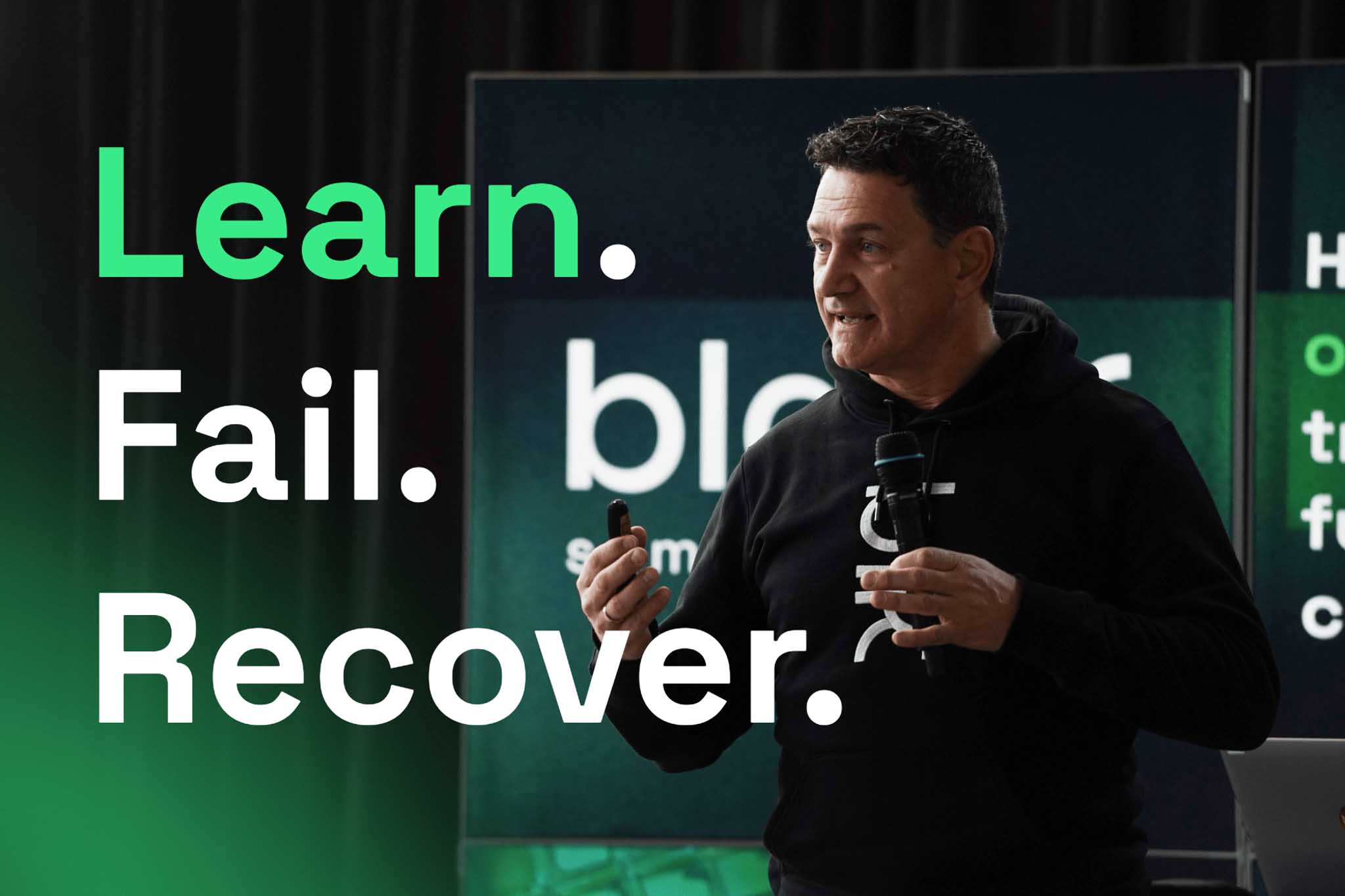
© Foto: Cem Sarac
Ogi Brkic, CPO
Linda Wetzel,
Cem Sarac
March 2025
With a background spanning 28 years in the semiconductor industry, Ogi has worked with companies like ATI, AMD, and Intel. He joined Black Semiconductor, drawn by its innovative integrated graphene photonic technology, which he believes can transform the industry and beyond.
Basically, I am a forever kid, that loves technology. A father of two wonderful twins and a committed husband, married for 28 years to my wife Milena. Our daughters are currently in their third year of university. So now we’re busy with our third child – our dog Tash, an Australian Shepherd and Poodle mix. We love sports, traveling, skiing, and golf.
I love the competitive side of sports. It’s now a family tradition, starting from learning to ski at a very young age. They’ve tried many sports and eventually chose gymnastics as their competitive sport. In gymnastics, you have to work harder than everyone else to win a medal. This mindset has spilled over into their lives – they’re self-motivated and disciplined, constantly learning and recovering from failures. I taught my daughters how to fight in their life through sport. A very important part of growing up is to understand what failing is and how to recover from it. With that, we gave them the tools to be successful, and it’s up to them to use them; learn, fail, and recover from failing – and respect people along the way.
I apply these principles unconsciously. Humility and respect are key. I see myself as a leader, not a manager. Management and leadership are completely different things. I strive to enable my team to be successful. A lot of these practices have become second nature to me.
Growing up in former Yugoslavia, amongst tall apartment buildings with thousands of kids, I learned the importance of adaptability. I played soccer with a wide variety of kids, some of whom became great scientists, while others are unfortunately criminals now. But back then, we all played together. I moved to Canada with only $20 in my pocket, I did not know anybody, and I couldn’t speak a word of English … zero. I worked in construction and attended night school, eventually bringing my sister over and putting us through university, all while working night shifts. After finishing university, our parents joined us in Canada.. Canada was good to us.
I started working at a very young age. I’ve been working since a young age, selling newspapers when I was five or six years old. After university, I joined the semiconductor industry, 28 years ago. My career began company that had multi-million-dollar revenue and more than 500 people. They had a rotation program where you go through four different departments in one year: design, manufacturing, application engineering, and product engineering. Allowing you to understand how the semiconductor industry works in just one year leading you to choose your field. I chose design as my field, as I believe it’s the foundation of everything. Throughout my career, I’ve worked at various startups and established companies, including ATI, AMD, and Intel. I’ve always been eager to understand more about the industry and improve processes, which led me to product marketing. I learned the marketing lingo and with my design background, I was basically bilingual. My design side was really helpful to talk to customers, because we talked to engineers and not salesmen. I had the understanding of how things are done and translated these things between customers and engineers. That was just pretty cool, I quickly realized how important it was to begin my career in design.
I’ve built businesses from scratch and have gravitated towards startups. At Intel and AMD I built businesses which didn’t exist, somewhat of a startup environment.
And at some point, Jay Nunez, a former colleague from AMD called me. He just joined this German startup, Black Semiconductor, and he told me that they needed some support on the product side. I talked with Daniel, Cedric, and Sebastian, and the technology was really unique. And this is how I ended up at Black Semi.
Black Semiconductor’s technology has the potential to change the world. The industry’s major problems today revolve around energy consumption and cost. Our graphene-based and photonics approach reduces energy consumptions while increasing performance a lot. The technology we are approaching will not only change the semiconductor world, but it will also affect the world in terms of knowledge about 2D materials.
It allows us to grow, collaborate, and execute our manufacturing plans. Having our photonics learning in-house means we can innovate and scale faster. This kind of learning speed is what gives a startup a huge advantage over a large industry player. This is the ground for innovation.
Our biggest challenge is to not overlook the small things. Every detail matters at this stage. We must get the first steps right and scale properly. Our biggest opportunity is to change the world, not only with our graphene and photonics solutions but also by influencing how people think about 2D materials as I mentioned before.
To be a part of something big and develop people. We have a diverse team of young people and industry experts. My goal is to be part of transforming this resource into something great.